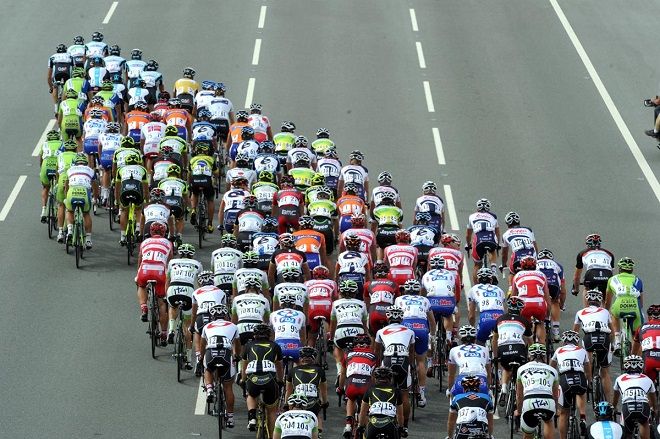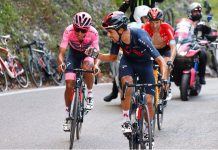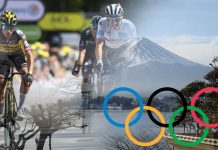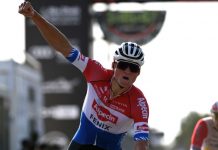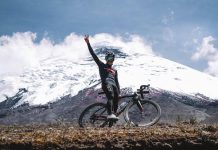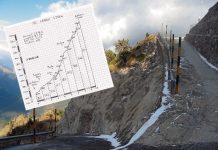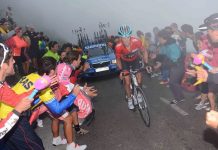If you’re new to road cycling, here are some explanations that might help you appreciate the Giro d’Italia, Paris-Roubaix or Tour de France beyond the stunning scenery.
What is a peloton?
It’s a French word meaning “platoon” that’s used to describe the largest group of riders. The peloton is also referred to as the pack or the bunch.
Why do riders race in a pack?
By riding behind other cyclists — called drafting — on a flat road, a rider uses roughly 30 percent less energy than he would riding alone. When the speed is extremely high (in chasing a breakaway or in the final hour of a flat stage), the pack stretches into a single line as each rider fights to stay in the draft created by the fast-moving group.
What is the gruppetto?
This is the group of riders that forms at the back of the race, usually on mountain stages. They ride at a pace just fast enough to finish within the day’s time limit (a varying percentage of the stage winner’s time). The gruppetto (Italian for “a small group”) is sometimes called the autobus, the bus or the laughing group — but this is no laughing matter. Riders at the back are often sick or injured and struggling just to finish the stage.
What are echelons?
When a strong wind is blowing from the side on a flat road and the racing is fast, the riders form an echelon — an angled line of single riders — to gain the maximum amount of draft from each other. The echelon rotates as the riders on the leeward side move forward and those on the windward side move back (a little like flying geese). The echelon can only be as wide as the road, so a field of 180 racers may split into five or six echelons, angled into the wind.
How does a team worker help his leader?
Although an individual wins the Tour de France, he could not do so without the help of his eight teammates. The duties of a team rider (or “domestique”) include:
- Riding “tempo” at the front of the pack to control the pace and prevent riders from rival teams from advancing up the road
- Riding in front or to the side of the leader to protect him from the wind
- Slowing down or dropping behind the field of riders to fetch fresh water bottles or food from the team car and taking them up to the leader
- Stopping when the leader has a puncture, crash or mechanical problem, and helping pace him back to the peloton
- Giving the leader one of his wheels (or his entire bike!) if the team car doesn’t arrive quickly enough to help
- Pacing the leader up to a threatening breakaway
- Pulling the leader up a mountain climb as long (and fast) as he can, to split up the group, to protect the leader from the wind and to discourage attacks by his rivals
How are mountain climbs categorized?
There are no set rules on how the organizer can categorize hills or mountains. This is how the Tour de France climbs are defined:
- The easiest is a Category 4, which is typically less than 2km long and about 5 percent grade, or up to 5km at a 2-3 percent grade.
- A Category 3 can be as short as one mile with a very steep grade, perhaps 10 percent; or as long as six miles with a grade less than 5 percent.
- A Category 2 can be as short as 5km at 8 percent, or as long as 15km at 4 percent
- A Category 1, once the highest category, can be anything from 8km at 8 percent to 20km at 5 percent.
- An hors catégorie (“above category”) rating is given to exceptionally tough climbs. This could either be a Category 1 whose summit is also the finish of the stage, or one that is more than 10km long with an average grade of at least 7.5 percent, or up to 25km long at 6 percent or steeper.


